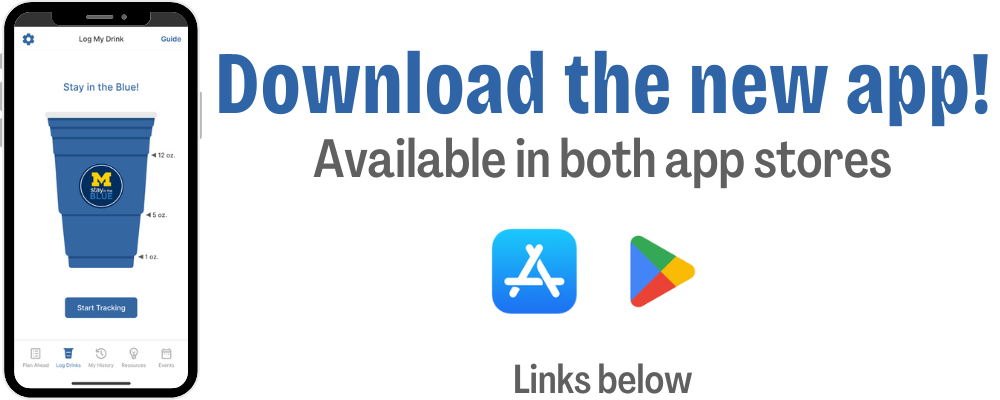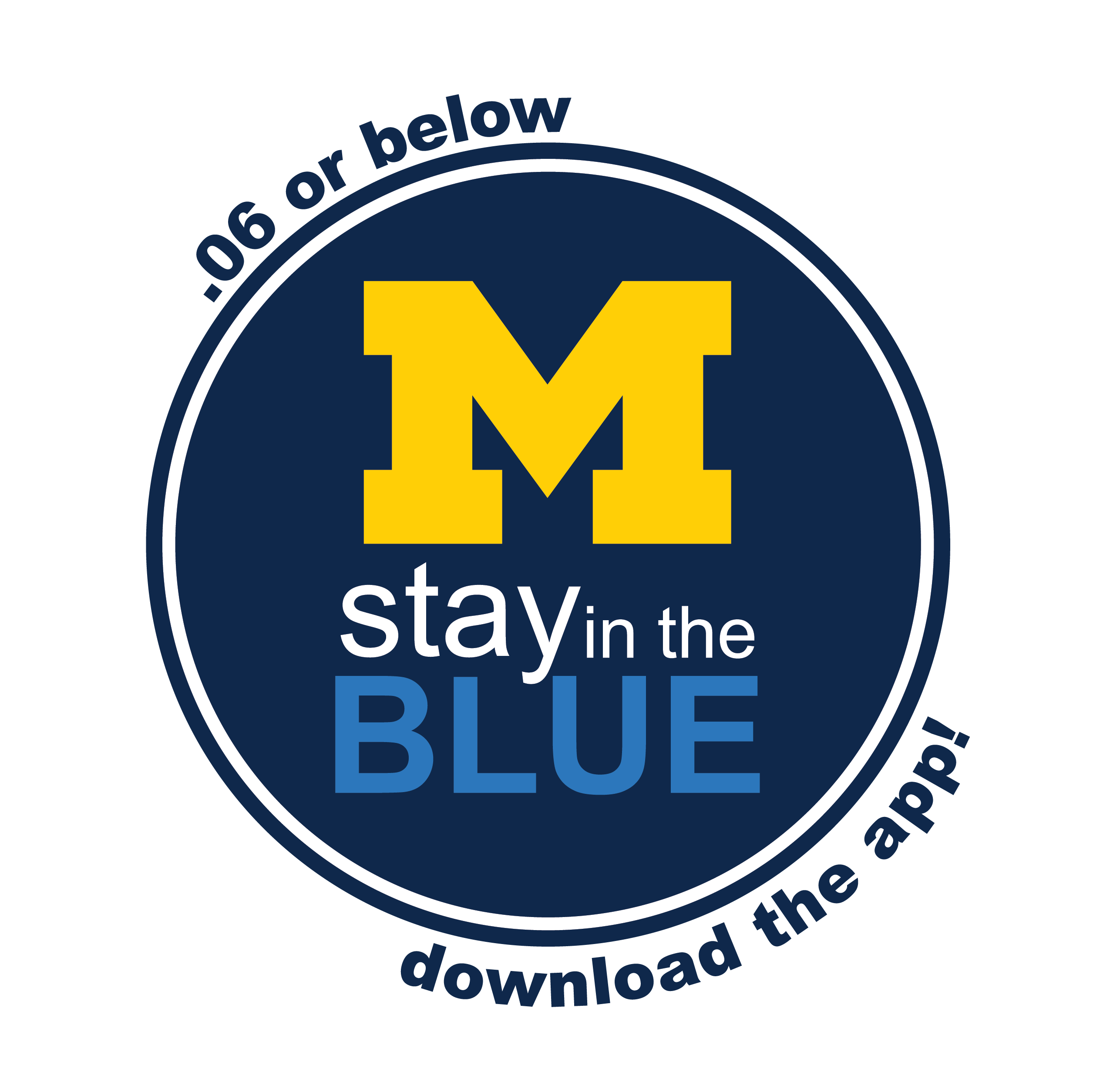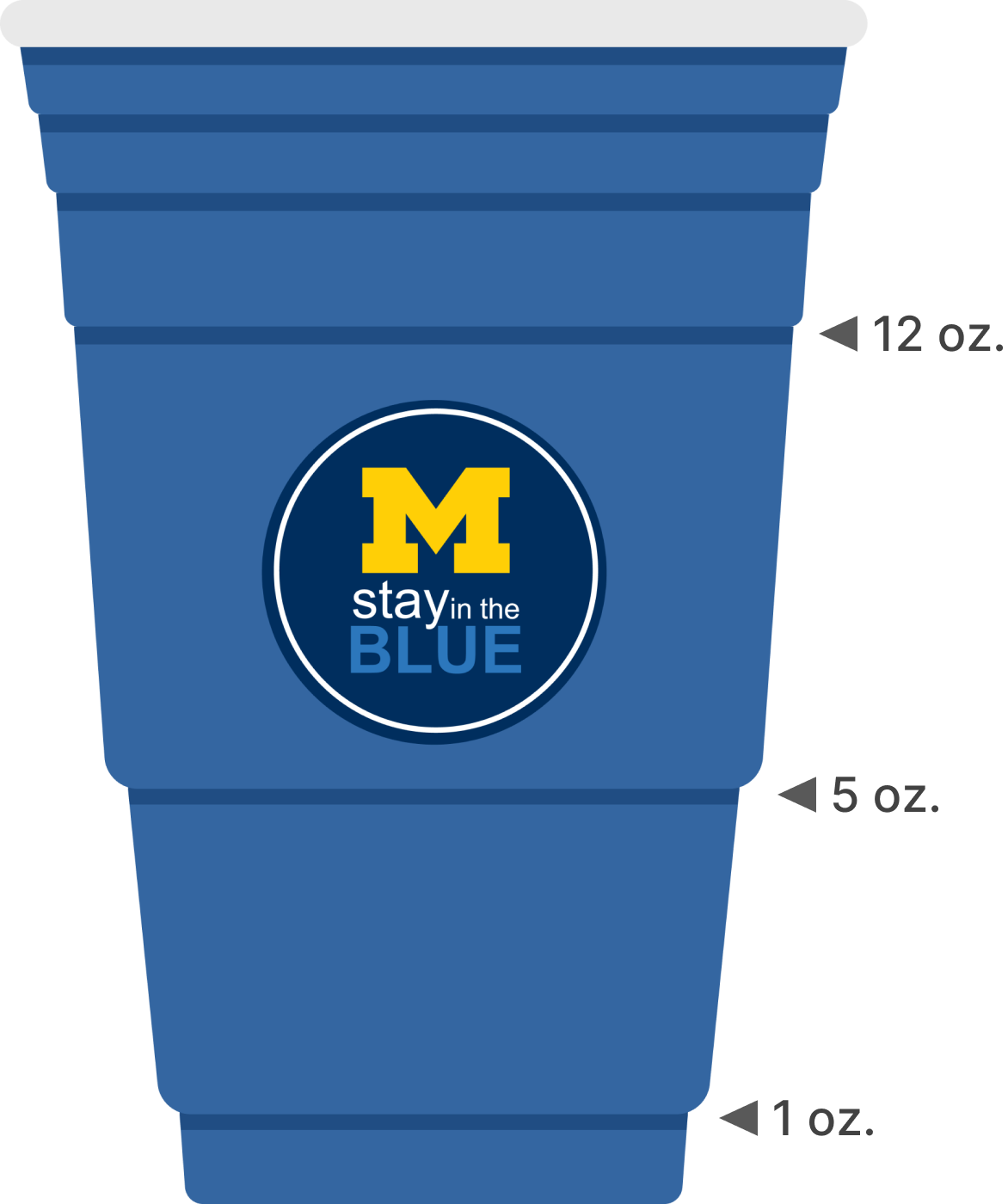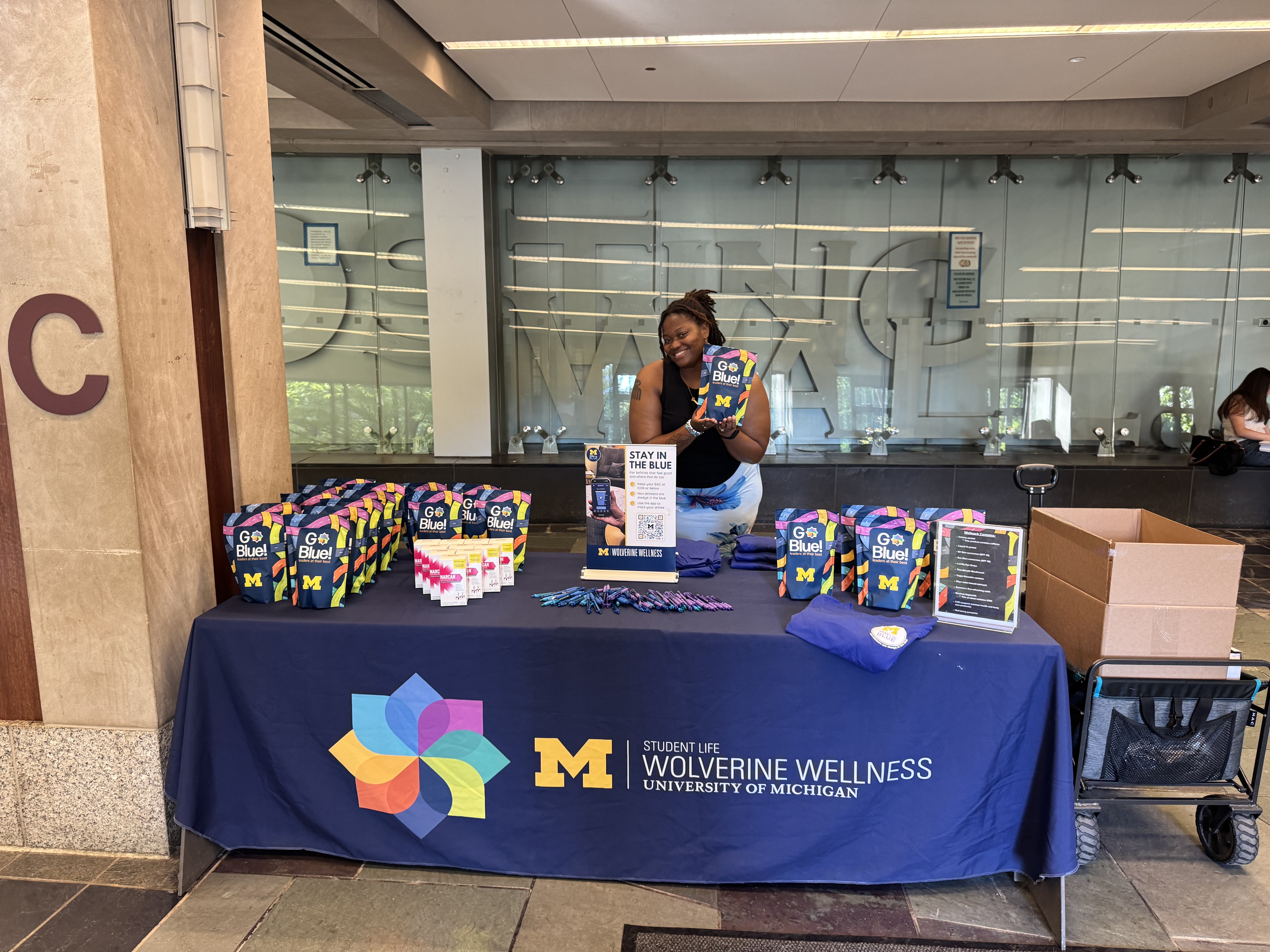Stay in the Blue to help you get what you want from drinking while avoiding the stuff you don't want. This means keeping your blood alcohol content (BAC) at 0.06 or below.

It really works!
Most U-M students don’t drink or drink at moderate levels (4 or fewer drinks on a single occasion). They’ve figured out that keeping your BAC at 0.06 or below means more fun and less drama. If you choose to drink, Stay in the Blue with these strategies from U-M students just like you:
- Download (and use) the free Stay in the Blue app. It's available in both the App & Play stores.
- Eat before and during drinking, especially foods high in protein.
- Drink water throughout the event.
- Go out later or leave earlier from events. Do something fun with friends instead of pregaming. Your future self will thank your present self for prioritizing sleep instead of drinking while tired!
- Set a drink limit using standard drinks. Share your limit with a friend and ask them to help you stick to it.
- Count your drinks using standard drinks. Many students use a marker or hair ties to track how many drinks they’ve had.
- Measure your own drinks instead of drinking from open containers (punch bowls, Igloo containers, Gatorade jugs…) to control how much alcohol you’re actually consuming. Many only use half a shot of liquor when mixing a drink or dilute shots with non-carbonated mixers to pace themselves better.
- Alternate alcoholic and non-alcoholic drinks to space out your drinks.
- Pace your drinking to a slower drinker with you. If it normally takes you 10 minutes to finish a beer, challenge yourself to take 20 minutes.
- Drink a look-alike beverage when you want to slow down or not drink at all.
- Set limits for drinking games by doing things like filling beer pong cups with water or only ⅓ full of beer, committing to a maximum number of rounds, or switching to a non-alcoholic beverage after drinking a set amount of standard drinks.
- Be prepared with ways to say “no” to a drink when you’ve had enough or if you’re not drinking.
- Check with your doctor and read the package warnings before drinking while taking any medications.
- Don't drink and drive.
How does it work?
Stay in the Blue works by keeping your BAC at 0.06 or below. This is the threshold at which most U-M students share that they get the most things they want out of drinking without the things they don’t want.
We call this BAC range of 0.0 - 0.06 “the blue.” Non-drinkers are automatically in the blue!
How many standard drinks is that?
The biggest way you can control your BAC is by controlling how many standard drinks you consume.

What's a drink?
Drinks contain differing amounts of alcohol, so we use “standard drink” to calculate BAC. One "standard" drink is equal to 0.6 oz of ethanol or…
- 12 oz. beer or seltzer.
- 5 oz. table wine (12%). This includes most white, red, rosé, and sparkling wines.
- 3 oz. fortified wine. This includes cognac, port, and sherry.
- 1.5 oz. liquor (80 proof). This includes whiskey, vodka, gin, rum, and brandy.
- 1 oz. grain alcohol (100 proof). This includes liquor like Everclear.
- 8-9 oz malt liquor.
“Just one drink”
Too often, people underestimate how much they have had to drink because they aren't using standard measurements.
- A red party cup contains 1.5 beers
- Mystery mixes in borgs, Igloo containers, or Gatorade jugs often contain 3-6 drinks per red cup, but who knows for sure?
- Long Island Iced Teas at local bars typically contain 4-5 standard drinks.
This is why it’s important to pour your own drink and avoid mystery mixes!
Use our free BAC Calculator to estimate your BAC
Keep in mind that alcohol affects all individuals differently. In addition to what and how much you drink, your BAC may also be affected by your:
- Biological sex
- Emotional state
- Amount of sleep
- Physical condition
- Hydration status
- Amount of food consumed
- Menstrual cycle
- Any additional drugs or medication
The predictable effects of blood alcohol content
Stay in the blue (.06 BAC and below)
- .00-.03: Slight euphoria. Less shy.
- .04-.06: Relaxed, less inhibition, impaired reasoning & memory. More daring.
Be cautious of maize (.07-.09 BAC)
- .07-.09: Impaired balance, speech, judgment, reasoning & reaction time. Illegal to drive @ .08!
Be wary of orange (.10-.19 BAC)
- .10-.12: Significant impairment of coordination, judgment & reaction time. Slurred speech. Possible sexual dysfunction.
- .13-.15: Blurred vision, anxiety, severely impaired coordination & judgment. Could blackout or pee your pants.
- .16-.19: Nausea, higher anxiety, "sloppy" drunk, could pass out.
Avoid the red (.20 BAC and above)
- .20-.24: Disorientation; need help to stand/walk. Vomiting & blackouts likely.
- .25-.29: Severe impairment of mental, physical, sensory functions, risk of serious injury. Likely to pass out.
- .30-.34: Stupor, little comprehension, hard to wake. Death is possible.
- .35+: Coma and/ or death is likely.
These effects can last beyond a night out!
It takes time to sober up: a night of heavy parting follows you into the next day. Time is the only thing that really, truly sobers you up.
Alcohol leaves your body at a constant rate, regardless of your sex, body type, or size. This rate is 0.015% per hour (0.25 - 0.30 ounces of ethanol, or about ½ a drink per hour).
Going to bed at 2 a.m. with a BAC of 0.20, the next 15 hours might look like this...
| Time | Activity | Blood Alcohol Content |
| 2 a.m. | Leave the party, get food, stumble home | .20 |
| 3 a.m | Drunk dial friends | .185 |
| 4 a.m | Crash into a chair | .17 |
| 5 a.m. | Wake up with a neck cramp, move to a bed | .155 |
| 6 a.m. | Restless sleep | .14 |
| 7 a.m. | Wake up, search for water, go back to bed | .125 |
| 8 a.m. | Restless sleep | .11 |
| 9 a.m | Hit snooze repeatedly, pounding headache | .095 |
| 10 a.m. | Realize you accidentally shut off alarm, jump out of bed, pull on sweats, grab gum, then hustle to class (DUI possible if you drive) | .08 |
| 11 a.m. | Contemplate whether food is a good idea -- decide it's not -- go home and sleep like the dead | .065 |
| noon | Alarm wakes you — contemplate skipping next class | .05 |
| 1 p.m. | In class, irritable | .035 |
| 2 p.m. | Head clearing, skip the gym and go home | .02 |
| 3 p.m. | Feeling better, decide to eat | .005 |
| 4 p.m. | Sober, at last | .00 |
| 5 p.m. | Make plans for the evening that don't involve drinking | .00 |
Want to avoid a hangover?
Drinking lightly or moderately is the only way to avoid a hangover. Use the Stay in the Blue strategies shared by other U-M students to get the things you want from drinking without the things you don’t want!
Want to get involved in these campaigns?
Fill out this form to request print materials and digital assets to share with your school or organization.
Interested in continuing the conversation?
Sign up for wellness coaching for alcohol use.

Distributing wellness packs at a Stay in the Blue campus pop-up event.
